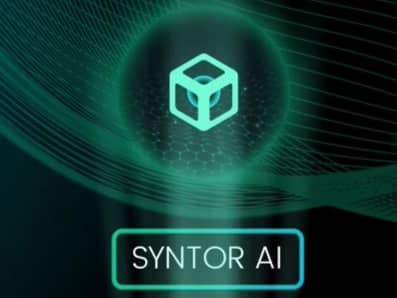订阅 wiki
Share wiki
Bookmark
Syntor
Syntor
Syntor is a decentralized protocol designed to create, deploy, and operate autonomous AI agents and leverage blockchain technology and smart contracts. Its primary purpose is to enable a decentralized ecosystem where AI agents can perform tasks across various domains. [1]
Overview
Syntor is a blockchain infrastructure designed to resolve key limitations in Web3 development, particularly in computation, data storage, and AI integration. It offers a decentralized compute layer that supports complex processing without relying on centralized systems, enabling more advanced use cases such as decentralized finance and AI-driven applications. Additionally, Syntor provides scalable and distributed storage solutions that can handle the large volumes of data required by modern Web3 services while maintaining security and efficiency.
In addition to computing and storage, Syntor incorporates AI capabilities directly into its infrastructure, allowing developers to integrate machine learning, analytics, and automation into decentralized applications. Combining services within a unified framework will streamline development workflows and improve performance across the Web3 ecosystem. Syntor supports creating more robust and scalable decentralized applications by addressing foundational technical challenges, contributing to broader adoption and innovation in the space. [3] [4]
Features
Syntor offers a decentralized infrastructure that supports AI-powered computing, allowing users to contribute GPU and CPU resources for tasks such as model training and inference. This network accommodates both on-chain and off-chain AI execution, enabling scalable and efficient Web3 applications. In addition, Syntor facilitates the creation and exchange of synthetic datasets through a decentralized data marketplace, supporting AI development while preserving user privacy.
The platform also includes financial mechanisms such as token staking and yield generation, with features like Farming-as-a-Service and AI-guided yield optimization. To further support performance and scalability, Syntor integrates decentralized storage for AI models and decentralized applications, along with edge computing capabilities that enable real-time AI inference and reduce application latency. [5]
TOR
Syntor’s native token, $TOR, supports the protocol’s core functions and economic model. It enables staking and decentralized governance, allowing token holders to participate in decision-making processes related to network upgrades and protocol changes. Additionally, $TOR is required to access computing resources and run AI workloads within the Syntor network.
The token also serves as a mechanism for distributing rewards, with stakers earning a share of the fees generated from AI-related activities. Furthermore, $TOR facilitates transactions within Syntor’s synthetic data marketplace, where users can buy AI-generated datasets for training and development purposes. [6]
Tokenomics
TOR has a total supply of 100M tokens and has the following allocation: [7]
- DEX Liquidity: 65%
- Strategic Partnerships: 8%
- Incentives: 8%
- Developer Grants: 6%
- User Rewards: 6%
- Team & Advisors: 5%
- Token Reserve: 2%
Governance
Syntor plans to implement a governance model based on a decentralized autonomous organization (DAO), allowing holders of the $TOR token to take part in protocol decision-making. This structure guides the network’s development through collective input rather than centralized control. [6]
Partnerships
发现错误了吗?
